Powerful words, images, and questions come pouring out of me, onto the pages of my journal, when I attend the Santa Barbara Museum of Art’s Writing in The Galleries program. Just like last time, setting aside an evening to open myself completely to a work of art left me so invigorated that my inner batteries, usually depleted by nine pm, were topped off. I worked, writing until well after midnight.
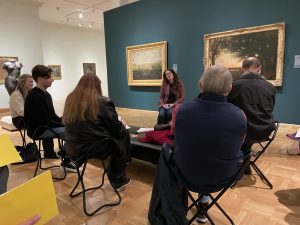
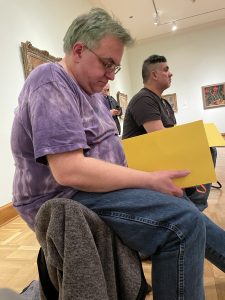
I went to the galleries yesterday carrying a heavy stack of soul wounds. They may not resonate with you, but our zoo had to euthanize its male Masai giraffe. Michael had debilitating arthritis and I have been feeling his pain, trying to manage it for myself after a lifetime of charmed health.
My 50th birthday is today, and over the last week, my head and heart were in an agonizing argument about what that meant. I ignored them both and took my body dancing on Saturday. (Today is ibuprofen day!)
I slung all of my emotional baggage over my shoulder to view and write about “Pleasures of the Evening” by Jean-Baptiste-Camille Corot.
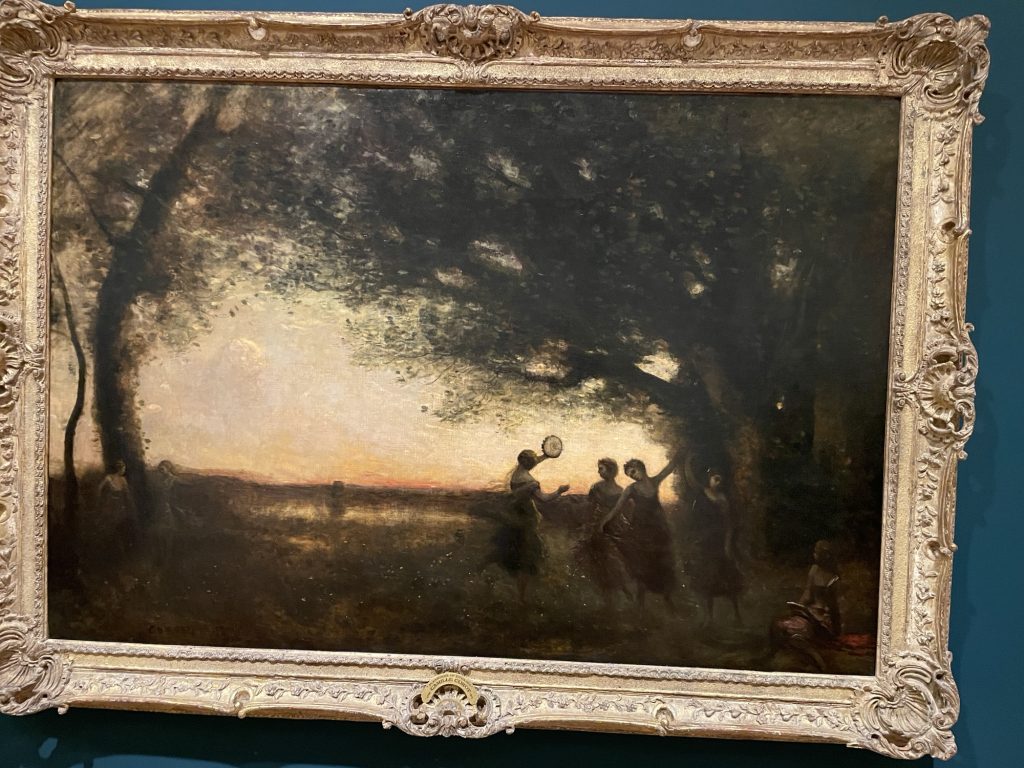
The guest writer, SBCC professor, and current poet Laureate of Santa Barbara, Emma Trelles, shared some new(ish)-to-me writing warm-ups. I’ve played the “spilling” technique as an improv game: The first word of each sentence a player speaks has to start with the last letter of the previous sentence.
Trelles had us create three columns and start to write down words that came to mind after staring at the painting for a minute.
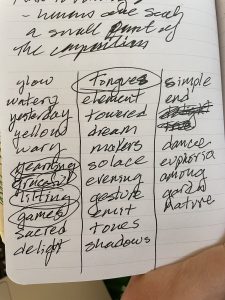
In case you can’t read my writing, some of the poetic phrases inadvertently created by my mind without the pressure of well…WRITING…were:
- glow watery yesterday
- yellow wary yearning
- graceful lilting games
- sacred delight tongues
- solace evening gesture
- emit tones shadows simple end
Kind of GORGEOUS, right?
The next exercise was very new to me and I loved it: Stare at the painting and ask it a question. Close your eyes, take 3 deep breaths, and write the answer the painting offers you.
“How can we not care about death?”
When I questioned the painting that depicted women dancing, singing, and picnicking at dusk in a darkening forest, it replied, “The way to not care about death is to watch the sunset—glowing orange sky and pink clouds—while dancing in the open air with friends. The way to not care about death is to follow the glimmering path through the woods; barely discernible, requiring all of your attention to place each bare foot carefully.”
If you’re paying attention, you’ll notice the painting told me to pay attention.
I repeated the spilling exercise with “Luxembourg Gardens” which struck me as the opposite of “Pleasures of The Evening.” The bright exposed space, dark, lone figure, and yet, someone reading, which is, of course, my own favorite pleasure. Except that the vicar or supplicant isn’t wearing a hat, that could be me, just as immersed in a happy activity as the dancing nymphs of evening.
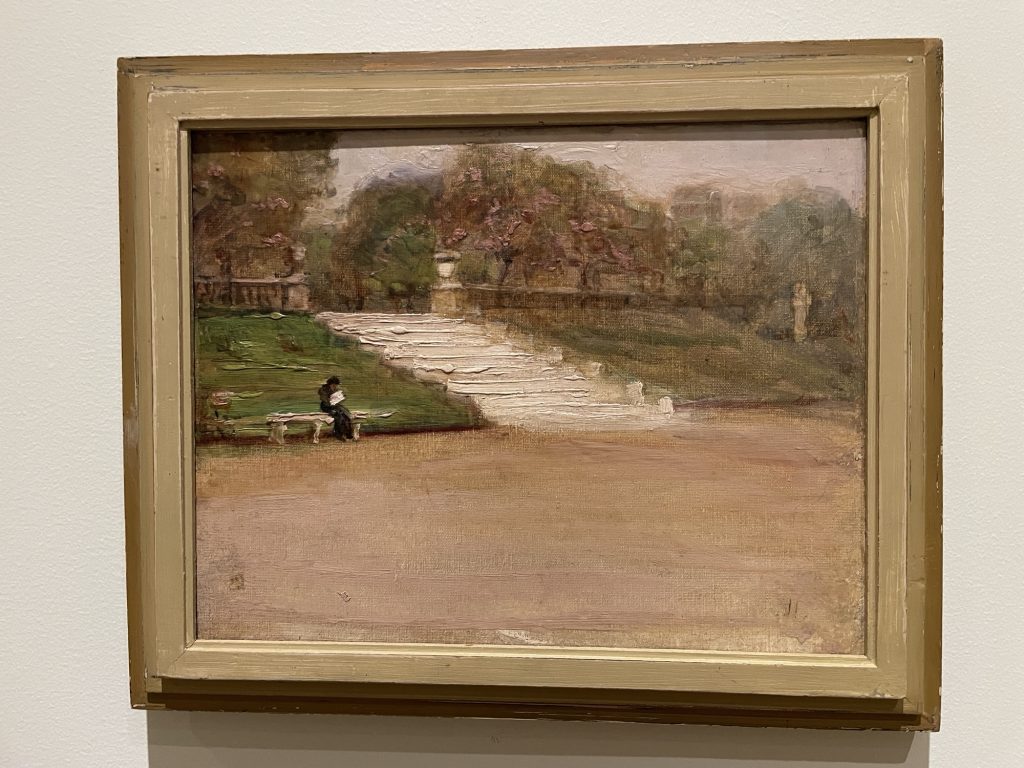
Using the spilling technique with this painting I got stuck three times in a row, unable to find “Y” words in my brain that easily matched the feel of the painting. I am a gerund and adverbaholic. Does anyone know a 12-step program for that?
After some time with the gardens, I found a wide padded contemplation bench and turned my attention to drafting a poem from the “word bank” created by the exercises. I love that term: Word Bank. Mmmmmm! You can deposit words at any time, make withdrawals, and there will always be an infinite supply!
The poem is influenced by the short lines of the poem Trelles wrote and shared. You can read it here:
Here’s what I wrote (though I edited it a bit when I had to type it in). If you enjoy my version, please let me know.
The Way To Not Care About Death
The way to not care about death
is to dance
euphoric solace
sacred delight
Along a faintly discernable
dirt path, barefoot.
The way to not care about death
is to dream
towering attention
wooded wariness
Amongst shadows sharing
aliveness, together.
The way to not care about death
is to direct
laughing tongues
emitting tones
Across sunset glimmers
before night rests.
Yvette Keller, 2/16/23
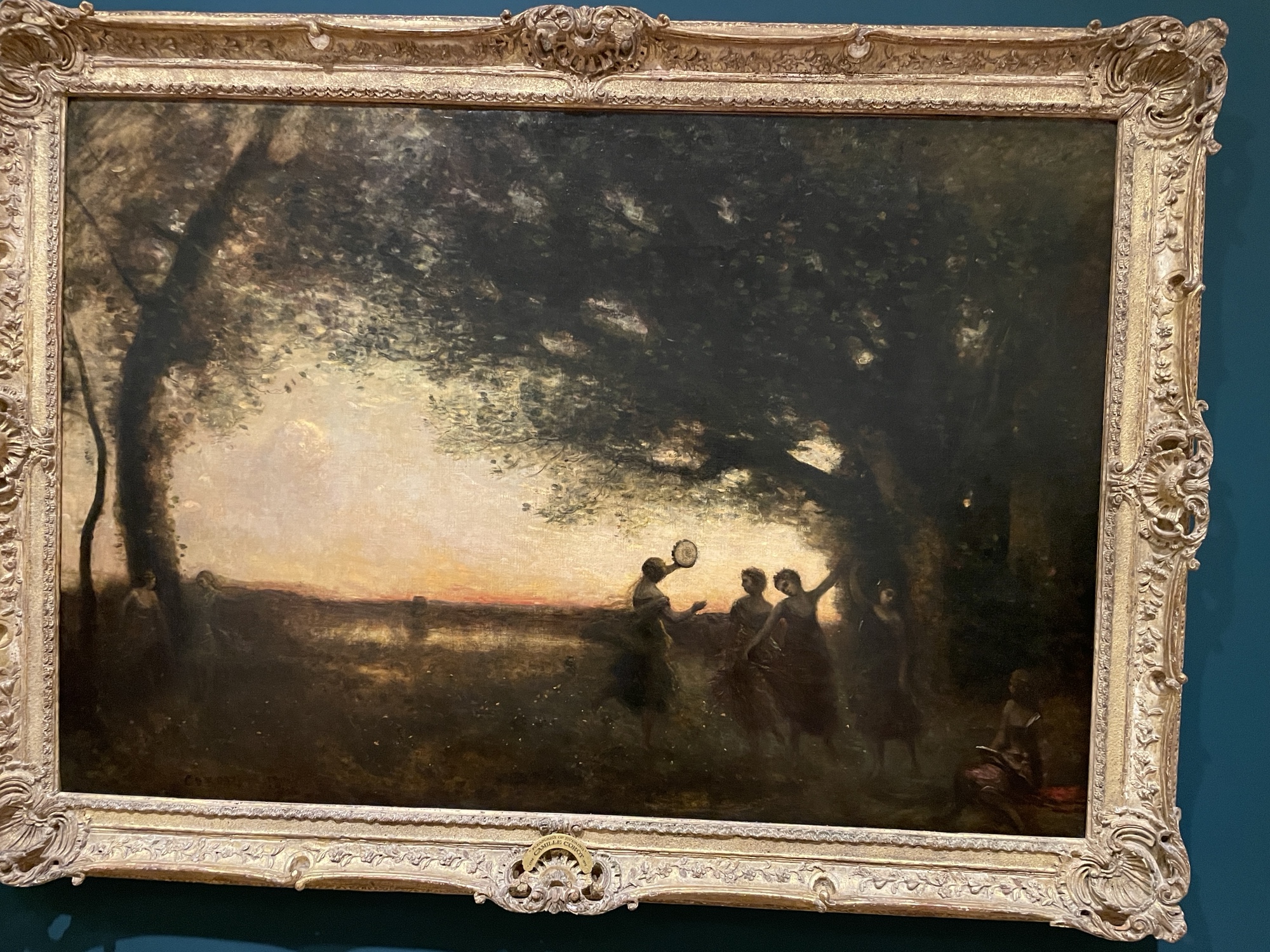
What do you think?